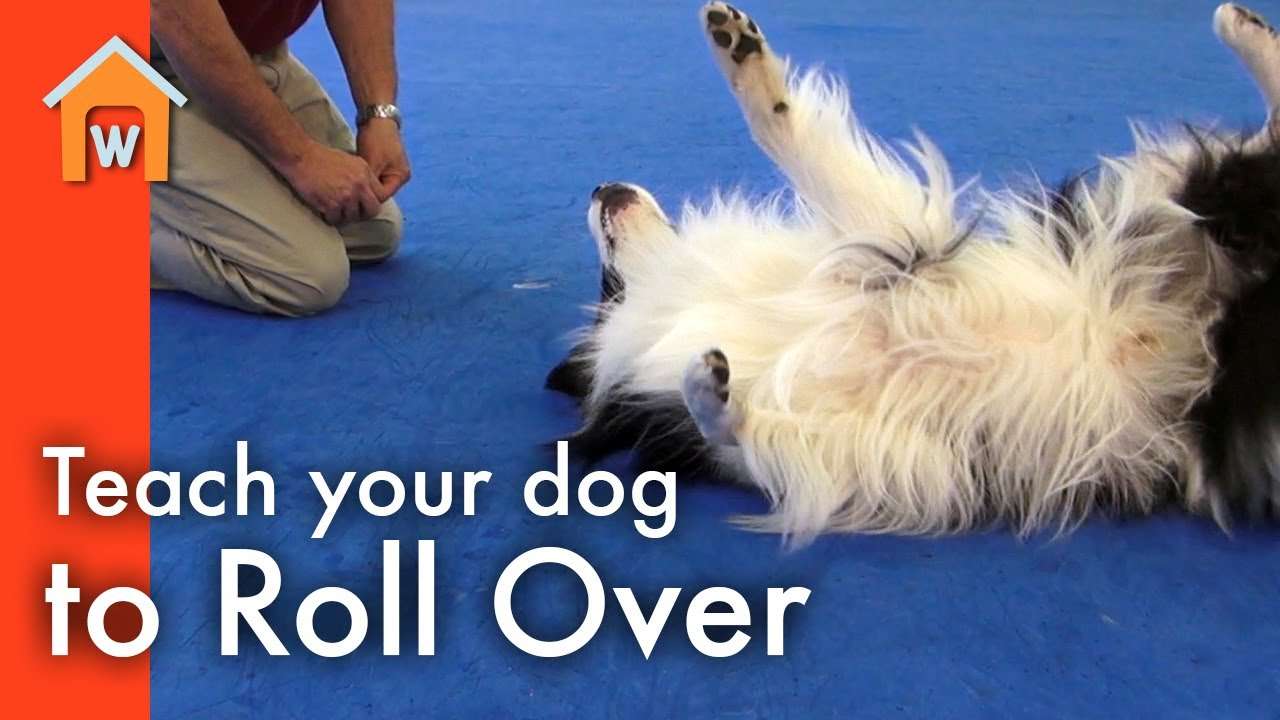Key Takeaways:
- Submissive dog behaviors can include tail tucking, crouching, and avoiding eye contact.
- Yawning and licking lips are common submissive gestures in dogs.
- Submissive urination is a behavior where a dog may urinate when feeling intimidated or anxious.
- Dogs may roll onto their backs to expose their bellies as a sign of submission.
- It's important to understand and respect these submissive behaviors to ensure the well-being of our canine companions.
Do you ever wonder what your furry friend is trying to tell you? Understanding your dog's behavior is essential for building a strong bond and ensuring their well-being. Whether you're a seasoned dog owner or considering getting a pup, knowing about submissive dog behaviors can provide valuable insights into their emotions and needs. In this article, we will explore 12 common submissive behaviors displayed by dogs and how understanding them can improve your relationship with your canine companion. So, let's dive in and unlock the secret language of our beloved four-legged friends!
Understanding Submissive Dog Behaviors
When it comes to dogs, understanding their behaviors is essential for building a strong bond and ensuring their well-being. One important behavior to recognize is submissiveness. Submissive behaviors are a way for dogs to communicate that they are not a threat and want to avoid conflict. By understanding these behaviors, we can better respond to our furry friends' needs and provide them with a safe and comfortable environment.
The Importance of Recognizing Submissive Behaviors in Dogs
Recognizing submissive behaviors in dogs is crucial because it helps us understand their emotions and intentions. When a dog displays submissive behaviors, it means they may be feeling anxious, fearful, or trying to show respect towards another dog or person. By recognizing these signs, we can adjust our own behavior accordingly and make sure the dog feels safe and secure.
Moreover, being aware of submissive behaviors also prevents misunderstandings between humans and dogs. For example, if someone misinterprets a dog's submission as aggression, they might respond inappropriately or become fearful themselves. Recognizing submissive behaviors allows us to respond with empathy and kindness, creating a positive interaction for both humans and dogs.
Identifying a Submissive Dog: Signs to Look For
Identifying whether a dog is displaying submissive behavior involves observing their body language closely. Here are some common signs that indicate a dog is being submissive:
- Tail tucking: When a dog tucks its tail between its legs, it is often a sign of submission or fear.
- Ears back: If the ears are pulled back against the head instead of standing up or forward, it suggests submissiveness.
- Avoiding eye contact: A submissive dog may look away or avert its gaze to avoid direct eye contact.
- Low posture: A dog may lower its body, crouch, or even roll over onto its back to show submission.
- Licking lips: Excessive lip licking can indicate anxiety and submissiveness in dogs.
Decoding a Dog's Body Language: What Does It Mean When a Dog Lowers Its Head and Tucks Its Tail?
When a dog lowers its head and tucks its tail between its legs, it is typically a sign of submission or fear. This body language indicates that the dog wants to avoid confrontation or any potential threat. By lowering their head and tucking their tail, dogs are trying to make themselves appear smaller and less threatening.
This behavior is often seen when a dog encounters another dominant dog or an unfamiliar person. It is essential to respect the dog's signals and not force them into uncomfortable situations. By giving them space and allowing them to feel safe, we can help alleviate their fear and build trust over time.
The Curious Case of Rolling Over: Why Do Some Dogs Do It?
Rolling over onto their back is another submissive behavior commonly displayed by dogs. While it may seem odd for a dog to expose their vulnerable belly, it is actually a sign of trust and submission. When a dog rolls over, they are showing that they trust the person or animal they are interacting with and are willing to submit themselves completely.
This behavior can also be seen as an invitation for belly rubs, which many dogs enjoy. However, it's important not to assume that all dogs want their bellies rubbed when they roll over. Some dogs may roll over out of fear or anxiety rather than seeking affection. Always observe the overall body language of the dog before engaging in any physical contact.
Avoiding Eye Contact: Is it Normal for a Submissive Dog?
Avoiding eye contact is a common behavior exhibited by submissive dogs. When a dog avoids direct eye contact, it signals that they are not being confrontational and want to avoid any potential conflict. It is their way of showing respect and submission towards another dog or person.
While this behavior is generally considered normal for submissive dogs, it's important to note that excessive avoidance of eye contact can also be a sign of fear or anxiety. If a dog consistently avoids eye contact and displays other signs of distress, it may be beneficial to consult with a professional trainer or veterinarian to address any underlying issues.
Responding to Submissive Dog Behaviors: Ensuring Comfort and Safety
When we encounter a submissive dog, it's crucial to respond in ways that make them feel comfortable and safe. Here are some tips on how to interact with a submissive dog:
- Approach calmly: Avoid sudden movements or loud noises that might startle the dog.
- Give space: Allow the dog to approach you at their own pace rather than forcing interaction.
- Use positive reinforcement: Reward the dog with treats, praise, or gentle petting when they display confident behaviors.
- Avoid punishment: Punishing a submissive dog can increase their anxiety and worsen their behavior. Instead, focus on positive reinforcement techniques.
- Create a safe environment: Provide the dog with a quiet place where they can retreat if they feel overwhelmed.
By understanding and responding appropriately to submissive behaviors, we can create an environment where our dogs feel secure, loved, and understood. Building trust and empathy with our furry companions is key to fostering a strong and harmonious bond.
Importance of Recognizing Submissive Behaviors in Dogs
Understanding and recognizing submissive behaviors in dogs is crucial for both their well-being and our own safety. Submissive behaviors are a natural part of a dog's social hierarchy, allowing them to communicate and avoid conflicts with other dogs or humans. By being able to identify these behaviors, we can respond appropriately and create a safe and comfortable environment for our furry friends.
Submissive behaviors in dogs can include lowering their body posture, avoiding eye contact, tucking their tail between their legs, or rolling over onto their back. These actions indicate that the dog is trying to show deference or submission to another individual. It is important not to misinterpret these behaviors as signs of fear or aggression, as this could lead to misunderstandings and potential harm.
Identifying a Submissive Dog: Signs to Look For
Recognizing submissive behavior in dogs requires keen observation skills. One common sign is when a dog lowers its body posture by crouching down or even lying on its belly. This gesture demonstrates submission and an attempt to appear non-threatening.
In addition, a submissive dog may avoid direct eye contact by looking away or glancing sideways. This behavior indicates respect and deference towards the other individual. Another telltale sign is when a dog tucks its tail between its legs, which signifies submission and an attempt to protect itself from potential harm.
It's important to note that not all dogs exhibit submissive behaviors in the same way. Some may display more subtle cues, such as licking their lips, yawning excessively, or even urinating when approached by someone they perceive as dominant. By paying attention to these signs, we can better understand our canine companions' emotions and respond accordingly.
Decoding a Dog's Body Language: What Does It Mean When a Dog Lowers Its Head and Tucks Its Tail?
When a dog lowers its head and tucks its tail, it is expressing submission or deference. This body language is an instinctive way for dogs to communicate their non-threatening intentions to other individuals, whether they are humans or fellow canines.
A lowered head indicates that the dog is acknowledging the presence of someone it perceives as dominant. By doing so, it shows respect and avoids any potential conflict. Tucking the tail between the legs further emphasizes this submissive stance, as it protects the vulnerable rear end from any perceived threats.
It's important to approach a dog displaying these behaviors with caution and respect. Forcing interaction or disregarding their signals can lead to stress or anxiety in the dog, potentially resulting in defensive reactions. By understanding and respecting a dog's body language, we can create a positive and safe environment for both ourselves and our furry companions.
The Curious Case of Rolling Over: Why Do Some Dogs Do It?
Rolling over is a behavior commonly associated with submissive dogs, but its meaning can vary depending on the context. When a dog voluntarily rolls onto its back, exposing its belly, it is often seen as an invitation for gentle interaction or playfulness.
In some cases, rolling over can also be a sign of trust towards another individual. By exposing their vulnerable underside, dogs demonstrate that they feel secure in their environment and have confidence in the person or animal they are interacting with.
However, it's essential to note that not all dogs enjoy having their bellies rubbed or being approached when they are in this position. Some may feel uncomfortable or even fearful if they perceive any threat while in such a vulnerable posture. It's crucial to respect each dog's individual preferences and boundaries when it comes to rolling over.
Avoiding Eye Contact: Is it Normal for a Submissive Dog?
Avoiding direct eye contact is indeed a common behavior exhibited by submissive dogs. When a dog avoids making eye contact, it is signaling respect and deference towards the other individual, whether human or canine.
In the canine world, prolonged direct eye contact can be seen as a challenge or threat. By looking away or glancing sideways, submissive dogs are trying to diffuse any potential conflict and show that they pose no harm. This behavior helps maintain social harmony and prevents unnecessary confrontations.
It's important to note that not all dogs who avoid eye contact are necessarily submissive. Some may have learned this behavior due to fear or past negative experiences. Understanding the overall body language of a dog is crucial in accurately interpreting their intentions and emotions.
Responding to Submissive Dog Behaviors: Ensuring Comfort and Safety
When encountering a submissive dog, it's essential to respond in a way that promotes comfort and safety for both the dog and yourself. First and foremost, it's crucial to respect their boundaries and avoid any actions that may cause them distress or anxiety.
Approaching a submissive dog calmly and gently can help alleviate any fears they may have. It's important to avoid sudden movements or loud noises that could startle them further. Offering treats or using positive reinforcement can help build trust and create positive associations with interactions.
If you need to handle a submissive dog, such as during grooming or veterinary procedures, it's important to do so with care and sensitivity. Gradual desensitization techniques can be used to help the dog become more comfortable with these situations over time.
Remember, every dog is unique, and their responses may vary. It's crucial to observe their body language and adjust your approach accordingly. By responding appropriately to submissive behaviors, we can create a nurturing environment that fosters trust and strengthens the bond between humans and dogs.
In conclusion, understanding submissive dog behaviors is important for dog owners. By recognizing these behaviors, we can better communicate with our furry friends and provide them with a safe and comfortable environment.
What are submissive Behaviours in dogs?
Submissive dog body language includes your dog attempting to lower themselves to the ground, either by lying on their back or curling up to appear smaller. It also encompasses the action of tucking their tail between their legs or wagging it from side to side.
What is the typical body language of a submissive dog?
It is important to observe that the dog is sitting with its paw raised, indicating a gesture of appeasement. The dog's head and neck are turned away from any potential confrontation, and its tail is positioned low to the ground or tucked underneath. Additionally, the dog is deliberately avoiding direct eye contact. Overall, these behaviors suggest that the dog is displaying signs of fear and submission.
Do submissive dogs often bark or growl?
Dogs that are submissive may exhibit behaviors such as barking or growling.
What does a calm submissive dog look like?
However, it is important to note that only a small number of dogs are naturally inclined to be leaders, so you will encounter very few dogs in this state of energy. When a dog is calm and submissive, their ears will rest against their head and their tail will hang down in the middle position.
What triggers submissive behavior?
According to social psychology, when we feel ashamed, we tend to exhibit submissive behaviors like slouching or avoiding eye contact. These behaviors can help calm someone we may have upset or threatened. The purpose of these guilt and shame-related behaviors is to preserve our relationships and prevent being excluded from the groups we rely on.
How do you know if your dog respects you?
According to Reed, if a dog shows respect towards you, they will also respect your personal space and obey your commands. This means that they won't constantly bother you for attention. Examples of respectful behaviors include coming when called without jumping on you and being calm when you are busy with something else.

















